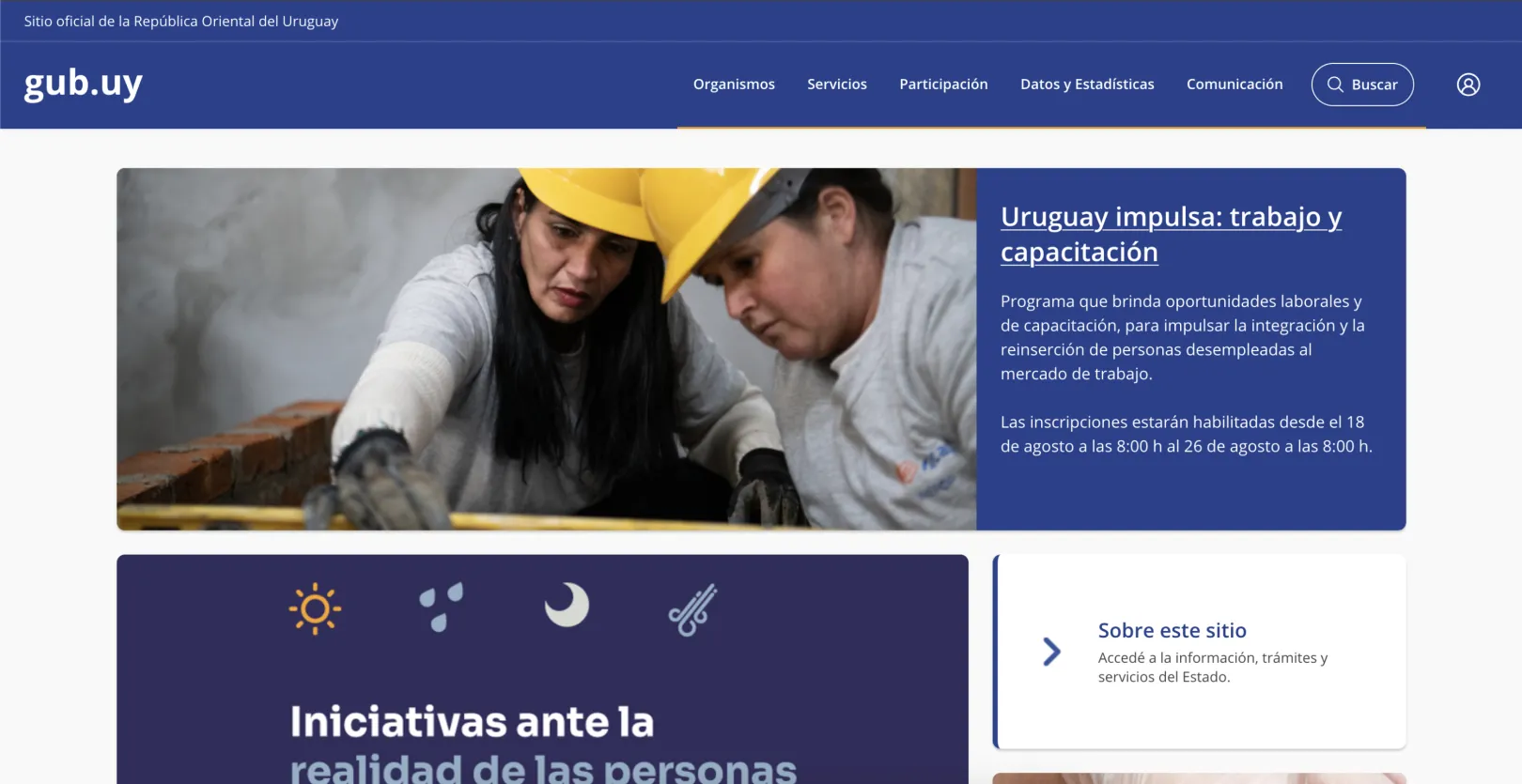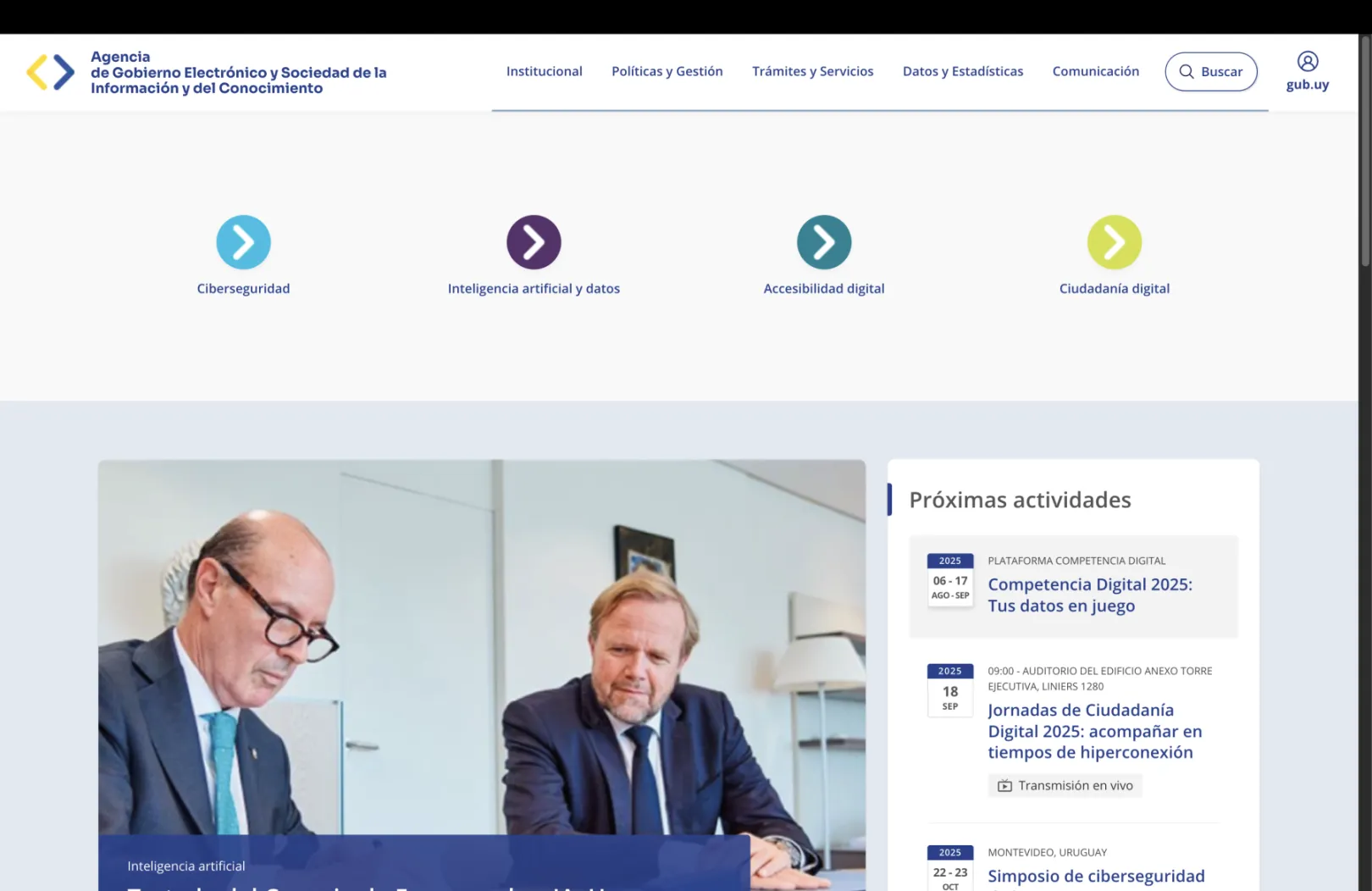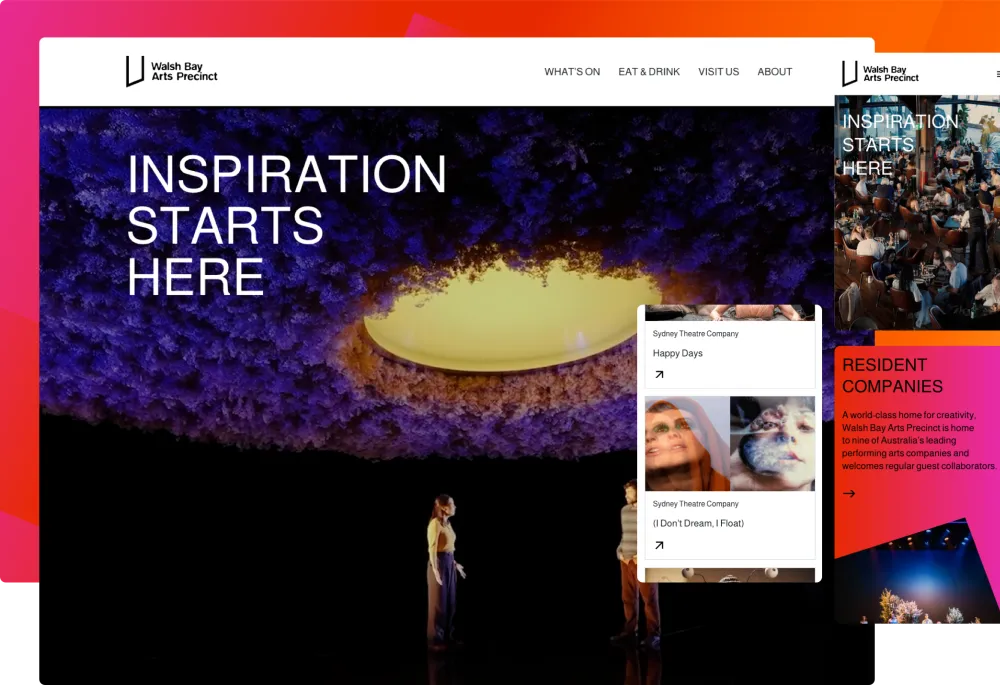Led by AGESIC, Gub.uy is Uruguay’s unified government web platform. Built on Drupal, with Kadabra as one of AGESIC’s engineering partners, it delivers a national multisite framework, shared design system, and CI/CD capabilities that let ministries and agencies publish independently while maintaining a consistent, accessible experience. The platform powers 100+ portals—including the Presidency and all ministries—and integrates national services such as Usuario gub.uy(identity), notifications, and open data.
Timeline: 2017–present (continuous evolution).
AGESIC set out to provide a single, trusted entry point where people could find information and complete procedures online. The goals were to consolidate many independent ministry sites into a coherent ecosystem, standardize accessibility, security, and user experience, and lower time-to-launch through shared components and governance. The platform also needed to integrate national services—single sign-on with Usuario gub.uy, personal notifications, and links to the open-data catalogue—while allowing each organization to retain editorial autonomy.
To meet these requirements, AGESIC—with Kadabra as its engineering partner—designed and implemented a national Drupal multisite platform with a shared design system and reusable components so teams can assemble pages consistently. Common taxonomies and search help citizens discover content across entities. Configuration management, infrastructure-as-code, and CI/CD pipelines make releases predictable and safe, and repeatable migration tooling supports the ongoing movement of legacy content. Accessibility was treated as a product requirement from the start, with patterns and workflows designed for AA conformance and reviewed continuously.
The outcome is a single national platform that powers more than 100 portals—including the Presidency and all ministries—within a consistent experience. New sites launch faster from a proven baseline; central improvements are shipped once and benefit every portal; and citizens use one secure profile to start and track procedures, receive notices, and access key records. The platform has evolved from Drupal 8 to 9 to 10 through planned upgrades rather than full rebuilds, protecting public investment while enabling continuous improvement.
Drupal matched the need for a secure, scalable, multi-site government platform. Its content modeling, multilingual and accessibility features, and strong security posture fit public-sector requirements. Multisite + configuration management enables “one core, many portals,” reducing duplication while preserving editorial autonomy. The mature ecosystem and predictable upgrade paths (8→9→10) protect long-term public investment.

Technical Specifications
Drupal version:
These were chosen to provide editors with simple content tools, smooth links to existing systems, and accessible design features—focusing on usability, integration, and inclusivity to meet the government’s service and compliance goals without technical complexity.



